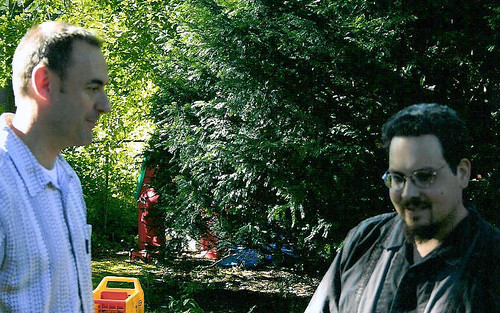🦋 Descent/transformation
How to enter the secret world of second meanings, how to break the code? He was standing on the threshold -- joyful and expectant -- but he had no idea how to cross it. Chapter 19 of The Black Book, "Signs of the City", seems in a way like the key to the story -- in a very meta- way, that is to say, being as Galip is spending this chapter discovering the "key" to the story he is pursuing, and thereby descending into paranoia. [Caveat lector: this is my understanding of the story at the moment, halfway through; certainly subject to revision.] I'm particularly interested in pages 213 - 219, Galip's hallucinatory walk through Nişantaşı central Istanbul, which culminates in his complete identification with Celâl. Read some extensive quotation and light analysis below the fold.
 As he walked across the bridge, gazing idly into the Sunday crowds, he was suddenly certain that he was on the verge of solving a riddle that had been vexing him for years without his even being aware of it. In some deep and dreamlike way he was also aware that this was an illusion, but he seemed able to hold the contradictory thoughts in his mind with ease. Throughout the book, there have been suggestions of a riddle for Galip to unlock -- on the most superficial level, he needs to figure out where Rüya is and where Celâl is. He's become convinced they're together, and the question Why? poses itself; also there are various paranoid threads running through the story about the history of Istanbul and the state of the modern world, and about Galip's family. Galip's relationship with Celâl parallels the reader's relationship with Pamuk. He stared at them for the first time, carefully reading their logos. For a moment it seemed to him that these were the words and letters that would lead him to the other world, the true world, and his heart leaped. ... All contained the key to the mystery, but what was the mystery? This is an intricate game: you can see that Galip is going insane; but you totally sympathize because you are feeling that the words you are reading are the ones that will lead you to the true world. You know Pamuk is hip to that and it's a joke you're sharing with him, but on some level you gotta wonder... Then you say "No, that's crazy" and turn the page. He surveyed the ramshackle shops lining the crooked pavements: These garden shears he saw before him, these star-spangled screwdrivers, NO PARKING signs, cans of tomato paste, these calendars you saw on the walls of cheap restaurants, this Byzantine aqueduct festooned with Plexiglas letters, the heavy padlocks hanging from the metal shop shutters -- they were all signs crying out to be read. Pamuk can imbue lists of objects with meaning like nobody else except maybe Pynchon. [Further: Maureen Freely in her afterword notes that "mesmerizing lists" are a characteristic of Turkish prose, and are difficult to translate successfully -- props to Ms. Freely for the job she does here, and maybe I should seek out more Turkish prose.] The list of objects Galip sees in front of the junk dealer on the next page, similarly great. Speaking of which, He named them all, enunciating each word with care, and studied them closely. It was not the objects that bewitched him, it was the order in which they'd been arranged. ... It reminded him of the vocabulary tests when he was studying English and French: sixteen familiar objects, waiting to be renamed in a new language. Galip wanted to call out the answers: Pipe, record, telephone, shoes, pliers....But they made no secret of their other meanings; that's what Galip found shocking. Galip's search for a riddle and an answer is coming to a head here as he begins to see meaning (and meaning directed at him) in everything he looks at. But when she reached the end of these vile translations, these same objects did transport Rüya and her detective to a new world, whereas all Galip could do was entertain the hope that he might one day see it. Again: playful flirtation with the idea of Galip as a frustrated reader looking for consummation in the text. Or: When he stepped onto Atatürk Bridge, Galip had resolved to look only at faces. Watching each face brighten at his gaze, he could almost see question marks bubbling from their heads -- the way they did in the Turkish versions of Spanish and Italian photo novels -- but they vanished in the air without leaving a trace. His walk ends after he crosses the second bridge (shades of Through the Looking Glass!); he is sitting in a coffeehouse when he finds his answer and his transformation is realized. After ordering tea from the boy, he took Celâl's column out of his coat pocket and began to read it again from the beginning. The letters, words, and sentences had not changed in any way, but as his eyes traveled over them, they suggested ideas that Galip had never before entertained; these were not Celâl's ideas but his own, though in some odd way he saw them reflected in the text.... He listed all his clues in tiny letters, and when he came to the end of the page, he thought, How easy that was! and then, Since I am now certain that Celâl and I think alike, I must study more faces! This certainty is Galip's ticket to the new world, the secret world of second meanings. It plays out in interesting ways for the rest of the chapter as his fantasy overlays the neighborhood he is moving in, after he returns to Nişantaşı.
posted evening of Saturday, March 29th, 2008
➳ More posts about The Black Book
➳ More posts about Orhan Pamuk
➳ More posts about Readings
|

